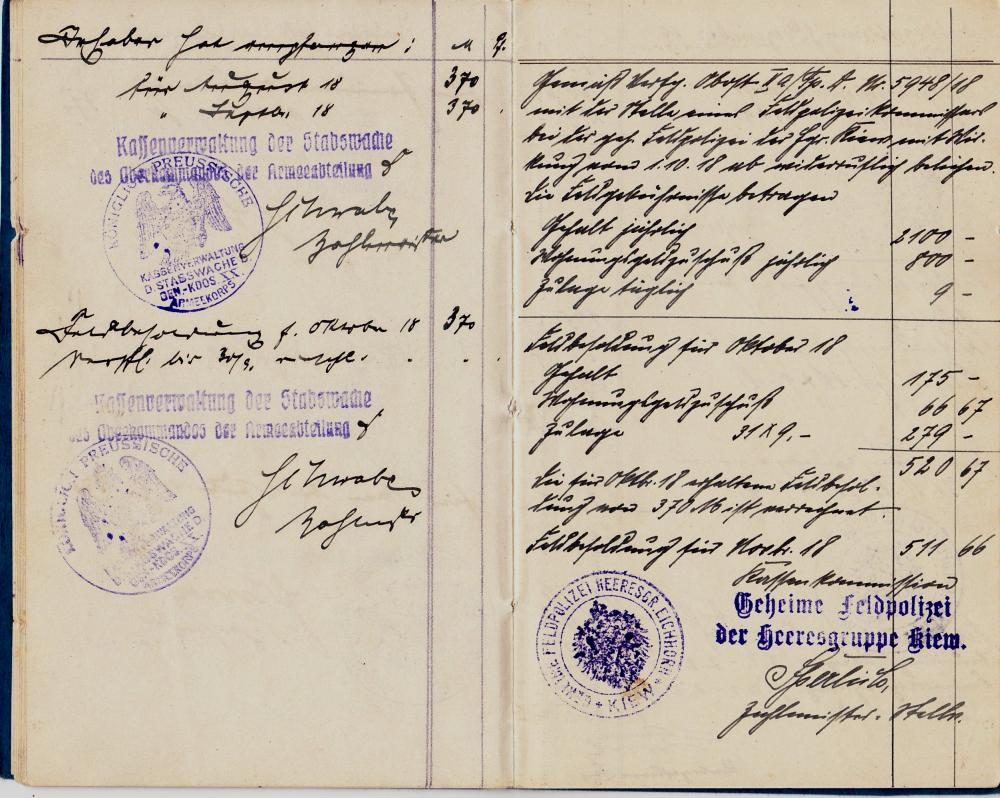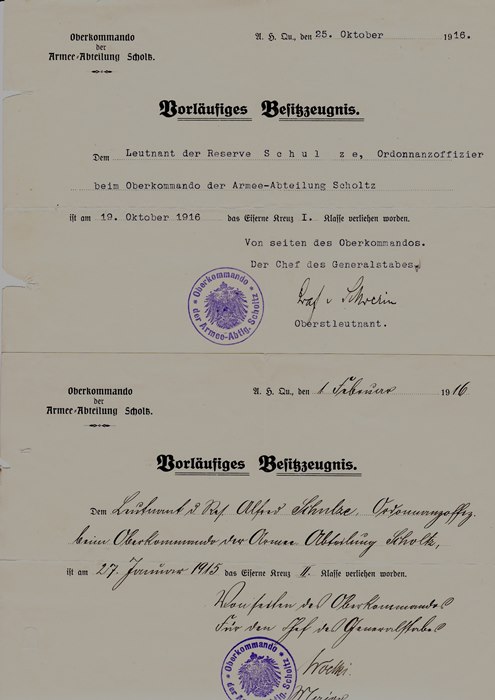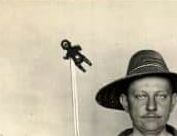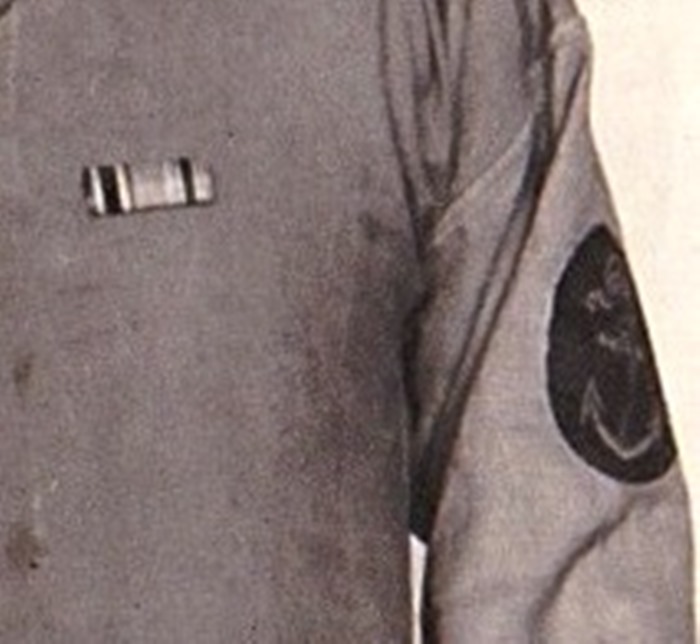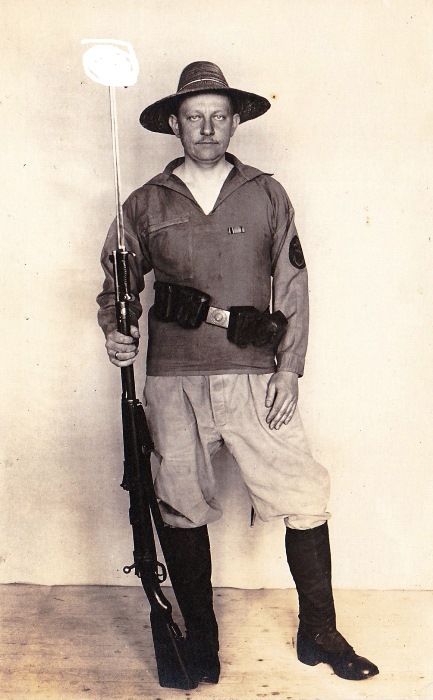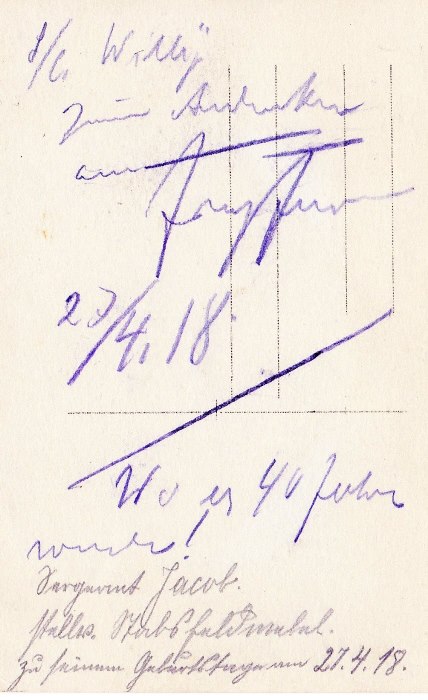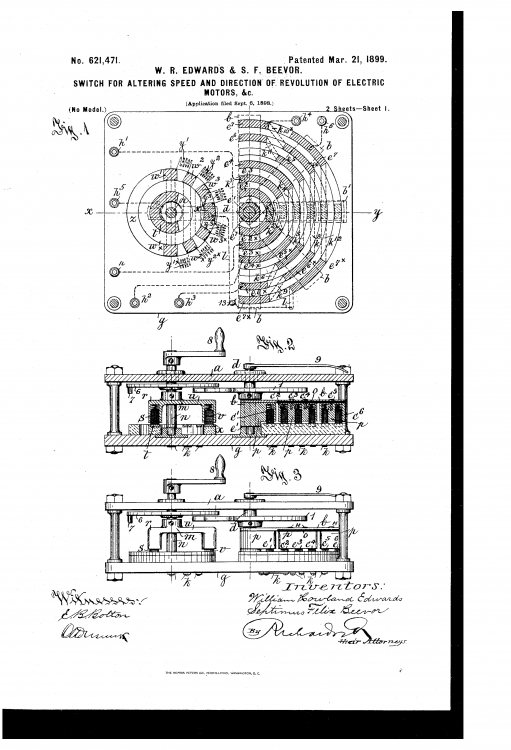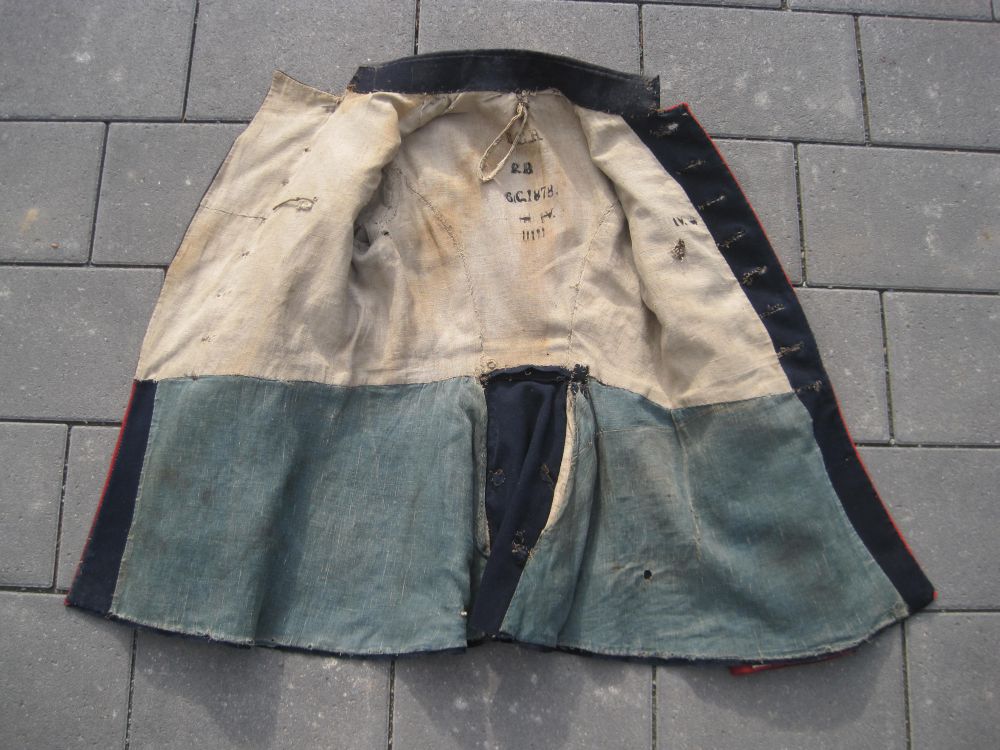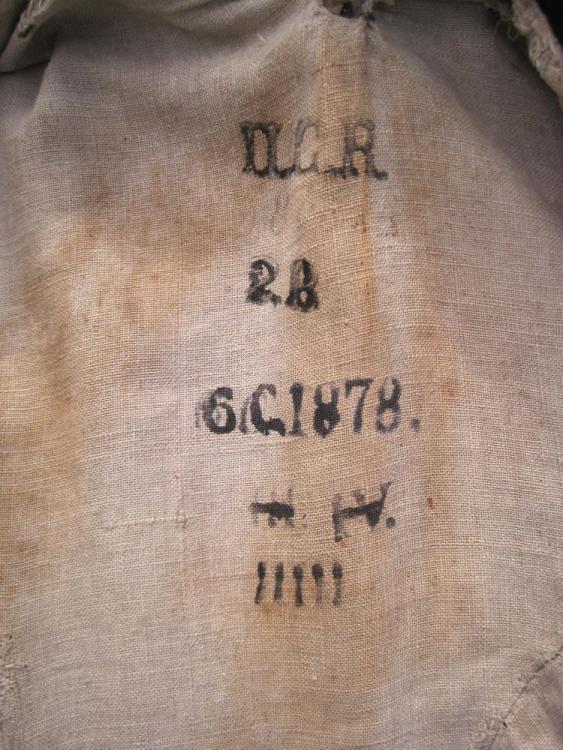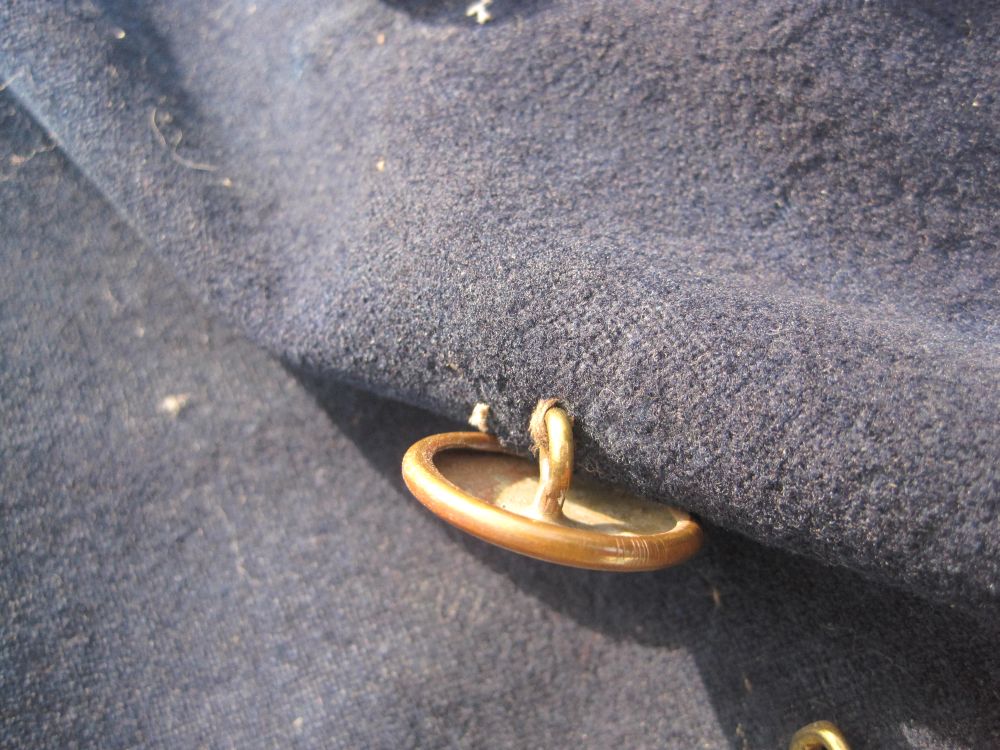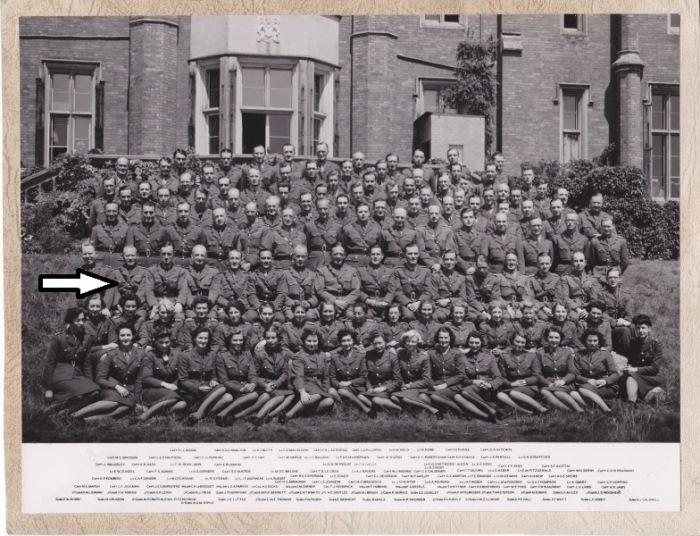-
Posts
2,470 -
Joined
-
Last visited
-
Days Won
2
Content Type
Profiles
Forums
Blogs
Gallery
Events
Store
Everything posted by dante
-
Lieutenant Heinrich Friedrich Alfred Schulze, Born 17 Nov 1889, Kassel, Hessen. It appears he was an He was ordonnanz officer (Originally Train?) to the commander of army division "Scholtz" on the eastern front, his task as I understand it was to assist the group commander in all manner of tasks from liaison to being the commander’s eyes on the ground... then in 1918 while serving in the Ukraine he transferred to the Geheime Feldpolizei, which was largely responsible for counter espionage against the Red Army in the Poltava area He was awarded both the Iron Cross 1st (signed by Graf von Schwerin) and 2nd class (documents attached) I have also read an excellent book "Bolsheviks in the Ukraine" by Adams and here https://de.wikipedia.org/wiki/Geheime_Feldpolizei_(Erster_Weltkrieg) Questions; 1) Is there any evidence that "ordonnanz officer" or "Orderly Officer" would be involved as an Intelligence officer or was an Intelligence officer ? 2) Is there any good English language books or articles on the "Geheime Feldpolizei" generally and more specifically in the Ukraine 3) Welcome any thoughts and suggestions on research avenues 4) Is the EK1 signed by this person https://de.wikipedia.org/wiki/Detlof_von_Schwerin 5) Has anyone any further information of Herr Schulze Thanks, Paul
-
Nice picture that hopefully will come my way The IWM has an oral history as follows; EEL 1 Recollections of service as officer with 36th Prussian Div in Ypres area, Belgium, 8/1917-9/1917: situation; conditions of service; battalion relief system; counter-attack following attack of 51st Div 20/9/1917; reaction to kilted soldiers; comparison of attitude of British and French wounded POWs. Recollections of German offensive in St Quentin sector,Somme area, France, 21/3/1918-28/3/1918: arrival of divisions from Eastern Front; prior training and state of morale, 1/1918; move into line in St Quentin area, 2/1918; capture of British POW from 36th Div whilst patrolling in No Man's Land; final preparations and state of morale, 20/3/1918; preliminary bombardment; attack in severe fog across No Man's Land and story of capturing British artillery battery from rear; ground attack from British aircraft; British POWs; breakthrough and question of cavalry exploitation; Recollections of operations, 4/1918-8/1918: move and subsequent offensive in Chemin des Dames sector, 4/1918-5/1918; question of state of civilian morale in Germany; failure of attack across River Marne effects of arrival of US troops, 7/1918; state of morale and effects of losses during retreat, 7/1918-8/1918; capture, 27/8/1918. Recollections of German offensive in St Quentin sector, 21/3/1918: final preparations and state of morale, 20/3/1918; attack in severe fog across No Man's Land and story of capturing British artillery battery from rear. Recollections of operations, 4/1918-8/1918: move and subsequent offensive in Chemin des Dames sector, 4/1918-5/1918; question of state of civilian morale in Germany; failure of attack across River Marne effects of arrival of US troops, 7/1918; state of morale and effects of losses during retreat, 7/1918-8/1918.
-
Gentleman many thanks for this
-

Military Medal group of 4
dante replied to CRBeery's topic in Great Britain: Orders, Gallantry, Campaign Medals
Have his first name as "Hugh", great group, thanks for showing -
Named to "Septimus Beevor", Electrical and automobile engineer and Inventor 1866: Septimus Felix Beevor was born in the last quarter of 1866 Marylebone, London. 1871: Septimus lived at 129 Harley Street, Marylebone London with his father Charles Beevor (Surgeon), mother Elizabeth (born Burell), three brothers two sisters and five servants. As a note, thier next door neighbor in nr. 131, retired Major General Henry Blois Turney (or Turner), Royal Engineers with family. In number 127 lived Vicar of St. Lawrence Jewry, Benjamin Morgan Cowie (1816-1900), with his family. 1872: Septimus's father Charles died in the first quarter of 1872. 1881: Septimus, still living with his mother, now a widow, at 129 Harley Street, with two of his brothers, two sisters and five servants. 1885: Septimus attended Cambridge University - From: Cambridge University Alumni, 1261-1900. Adm. (age 18) at TRINITY HALL, 1885. S. of Charles, Esq., F.R.C.S., of 129, Harley Street, London, W. [Schools, Harrow and Wellington.] Matric. Michs. 1885; B.A. 1888. Electrical and automobile engineer. Died Nov. 1, 1918. Brother of Henry M. (1876), etc. (Harrow School Registry.) 1890: He had a provisional patent proved May 31st 1890. "Improvements in electrical switches on apparatus for making and breaking electrical circuts. Septimus Felix Beevor, 433 Strand, London. 1891: In 1891, age 24 he still lived at 129 Harley street, with his mother, two siblings and five servants. He was now working as an Electrical Engineer. Septimus married Jane Stirling in the third quarter of 1891. 1899: Septimus was a member of Automobile Club of Great Britain and Ireland (Founded 1897 - Later Royal Automobile Club), and took part in the "House Dinner held on February 8th 1899" 1901: In the 1901 Census, Septimus Beevor was living at 25 Leinster Square, Paddington Parish with his wife Jane, their three children: Jean E. Beevor (Born 1893), Henry Stirling Beevor (July 25th 1894)* and Felix Victor Beevor (Born December 11th 1897)**. Also a servant (nurse) was living with the family. 1911: Septimus was single in 1911 (divorced?), living alone at 4n Hyde Park (unreadable). 1913: Septimus was mentioned in the "Installation News" of October 1913. He was apparently a member of the Batti-Wallahs Society, which is an association of marine electrical engineers. "The society was founded in 1906 by P&O Line electrical engineers, who provided navigational lighting for shipping passing through confined waters such as the Suez Canal. Membership was later extended to electrical engineers in the RN and merchant shipping lines. 'Batti- wallah' is derived from the Hindustani for 'lamp men'." Source: Navy News, October 2008. 1918: Septimus Felix Beevor living 10th Cambridge Terrace, Hyde Park, Middlesex, died November 1st 1918, 52 years old. He left behind his widow Jane Beevor, and 1631 Pounds 18s. 6d. Notes: Septimus's brother, Charles Edward Beevor (June 12, 1854- December 5, 1908) was an English neurologist and anatomist who described Beevor's sign, the Jaw jerk reflex, and the area of the brain supplied by the anterior choroidal artery. He also coined Beevor's axiom that "the brain does not know muscles, only movements." * Henry S. Beevor served with the Royal Wiltshire Yeomanry as Private with the number 69. He was commisioned 2nd Lieutenant into the Royal Munster Fusiliers, and is entitled to a 15-Star trio. ** Felix Victor Beevor was killed in action 18 years old during The Battle of Bazentin Ridge, July 15th 1916, 5th Battalion (attached to 1st Battalion) Middlesex Regiment. He is remembered on the Loos Memorial. Sadly his duties as a special are not available nor the means of his death, as ever always welcome more information
-
My thanks to Chris to allow me to be the next custodian as well as his excellent article here http://gmic.co.uk/topic/69807-a-dramatic-group-to-an-intel-officer/ to follow on from Chris's research; WW1 Pair to Private 236905 C.F. Juulman Royal Engineers, Later Captain Karl Ferdinand (known as Carl Ferdinand) Carl Juulman, Served with the Royal Engineers, Signal Service in France and then with the 45th Bn Royal Fusiliers for Russia as an Interpreter. Great war pair to Private 236905 C.F. Juulman Royal Engineers. His Medal Index Card has him moving to the Royal Fusiliers as GS/128838, Private, City of London Regiment (The regimental number is consistent with the 45th battalion in Russia) in France. Prior to Russia he served with the Royal Engineers Wireless Depot as Sapper 236905 and later in G.H.Q. Signals Company. R.E. Born in Russian, Estonia in 1885, (I have yet to find out his residence in the UK prior to enlisting (or when).However what I have is a rare group photo of "interpreters" "Draft 158" that came with the group, note the officer in the middle "H C Platts" Note; the MIC for Lt Harold Clayton Platts (centre of photo) has his only service as North Russia, winning the MC, with 385th Field Company R.E. This would have been a draft (158) of volunteers to serve in Russia. No note of his war service in France is recorded however the medal roll has him as a signaller working in GHQ in France; as such he would have made some contact with many British army intelligence officers. In 1920 we have an Estonian registration card as well as his Naturalization details noted in the London Gazette December 1923 "Juulmann, Karl Ferdinand (known as Karl Ferdinand Juulman); Estonia; Attached to Intelligence Department, British Army on the Rhine; Intelligence Office, Cologne, British Army of the Rhine. 13 November, 1923" The head of which was Colonel Thomas Henry Kendrick SIS/Mi6. In 1931 he lived in Hornsey then to 8 Cholmeley Park London, N.6 until 1934 In 1934 we find him living in Berlin as Charles Juulman, address 30, Bamberger Str. 15, B 6 Cornelius 02 91 Berlin until 1938 (conjecture but it could be he worked with Frank Foley https://en.wikipedia.org/wiki/Frank_Foley) In 1939 again registered as Charles Juulman, working as an "Examiner" Passport Office British Embassy, Bern, Switzerland. Pass port offices were used as cover for SIS/Mi6. Carl was commissioned into the Intelligence Corps in 1940 and is noted in the MII9 and Combined Services Detailed Interrogation Centre (CSDIC) Archives as working at Latimer House http://amershamhistory.info/research/wars/latimer-house/ he is also identified in Helen Fry’s book on Kendrick “Spymaster: The secret life of Kendrick” To confirm his work and how close to Kendrick here is a photo of the SIS team working at CSDIC, Demobilised in 1945, Carl died in 1948 in London With so little information but with many clues it can be assumed that he was in England at the time of enlistment and although a "Foreigner" Russia was an ally, we also know that "Russians" were actively recruited into the British army especially the "Judeans" and "Zion Mule Corps", his language skills would have been used in "Signals intercepts" and we know that it was these language skills took him to Russia in 1919. We know he was naturalized in 1923 and working with British Intelligence in Cologne, the head of was Kendrick. We know he used the forename Charles and the he was in Berlin in the late 1930's and working in Passport control in Switzerland just before the war, his wartime service in CSDIC at Latimer house is also confirmed. So did he meet Kendrick in France in 1918, was he recruited into Mi6 before Russia or on his return or just an agent for them, was he taken on full time after naturalization in 1923 and then as part of the anti-communist/anti Nazi counter intelligence ? Was his work in Berlin and later in Bern part of Foley's and Kendrick's known activities in getting Jewish refugees out of Germany...and lastly was he involved in the interrogation of Hess. Welcome your thoughts
-
-
-
Yes of course will do them later today
-
Love to know as well....Initials of his name?
-

Early Field Phones
dante replied to 120RIR's topic in Germany: Imperial Uniforms, Headwear, Insignia & Personal Equipment
Love to see any photos....it was a "bring back"....you never know







